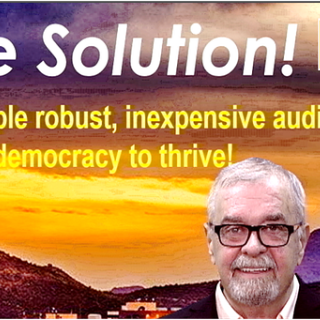One thing is clear about the Smart City grant. Columbus and its sprawl is about to become a petri dish to “creatively reengineer our urban transportation networks” so to avoid global warming and connect the underserved to good jobs. This is the altruistic vision some national pundits have consecrated Columbus with.
The grant is heady stuff for “Test City USA.” A $150 million public and private work-in-progress to test sci-fi transportation technology such as driver-less cars. A plan to build neighborhood hubs with electronic vehicle charging stations that will also have bikeshare and carshare services.
The US Department of Transportation and host of corporate partners – including Microsoft co-founder Paul Allen’s Vulcan Inc., which chipped in $10 million – chose Columbus over 78 other cities, such as Austin, San Francisco, Portland and Denver.
And while our traffic congestion and its pollution doesn’t compare to Denver’s problems, Central Ohio needs to reengineer its transportation and do it in a hurry. For the last several years anyone who commutes into Columbus has painfully dealt with ongoing major road construction to end the outerbelt’s bottlenecks.
These projects are a sprawl lover’s dream, benefitting Grove City, Hilliard, Pickerington, Marysville and Delaware County. But because MORPC or the Mid-Ohio Regional Planning Commission is predicting a million more residents by 2050, these multi-million dollar construction projects may once again just be a temporary fix.
What could help the forecasted population boom is something many have been advocating for over three decades: light rail, monorail or street cars. Recent Ohio State graduate Colleen Craig, who created a facebook page called Smart City Watch Columbus, says it took “a ridiculous” 45 minutes from campus on a COTA bus to get to her Statehouse job.
“The grant money could be a big help in building a light rail or street cars,” says Craig who’s seeking a career in urban planning. “But the decision makers in this process would rather use this money for the flashy concept of driver-less cars that benefit a small number of people instead of investing in public transit that’s widely accessible and available to the people that need it. If a fleet of driver-less cars is the plan they go with that is absolutely doing a disservice to the people they are trying to empower.”
No specific and detailed plan has been released but Mayor Andrew Ginther’s office has published a “Smart Columbus Overview.” The overview states “intelligent transportation systems” will be deployed to four districts: Linden, Easton mall, Rickenbacker airport and downtown.
Craig says driver-less cars helping people from Linden shop at Easton, or driver-less trucks moving more foreign-made goods out of Rickenbacker (one of the nation’s largest foreign trade zones), would be a misuse of the grant.
“That just sounds as if they are thinly veiling their true objectives with their stated objective of empowering underserved areas of the city with more options for transit,” she said.
Another grassroots effort keeping a close eye on the Smart City grant is Transit Columbus, which has been advocating for “multimodal transportation solutions” since 2010. Besides light rail their solutions include investing more in COTA, bus rapid transit, while improving walkability and biking in the city, as well.
Transit Columbus supports the Smart City grant, says the group’s vice chair Josh Lapp, but they’ve also initiated a petition calling on Columbus to include light rail in future mass transit plans.
“The petition isn’t so much about the Smart City grant,” says Lapp. “The city has planning processes underway right now that are likely to include light rail and other options, so we want to make sure that mass transit remains in the conversation and that people know there is support for continued investments. The Smart City is a piece of the system but it isn’t the end all be all.”
Lapp says the ideal future is an integrated one where a driver-less car takes you to a light rail station. “At the end of the day you can only fit so many cars in so much space.”
The city’s application for the Smart City focused on specific areas, and in particular targeted the Easton area, Linden and the Cleveland Avenue corridor. Already in the works is the Cleveland Avenue Bus Rapid Transit Line or what some are calling the “CMAX line.” It will have kiosks to purchase tickets for faster boarding, have less stops and utilize traffic signal priority technology to make lights stay greener longer.
The plan for Easton calls for a driver-less shuttle system and driver-less cars to link people to the mall and nearby warehouse jobs. This has some suggesting L Brands, which flies a huge chunk of its inventory into Rickenbacker, has already had too much influence on the Smart City plan. Keep in mind L Brands and its CEO Les Wexner are major players with the Columbus Partnership, the corporate effort that’s putting $90 million into Smart City.
Lapp believes this is nothing but rumor. He says the grant is about improving everyone’s future. And while Columbus traffic issues are tame compared to othercities, he says if you consider MORPC’s population projections, it’s only going to get worse.
“This is really the time to invest when it’s not as bad as it could be or it will be,” he says.



